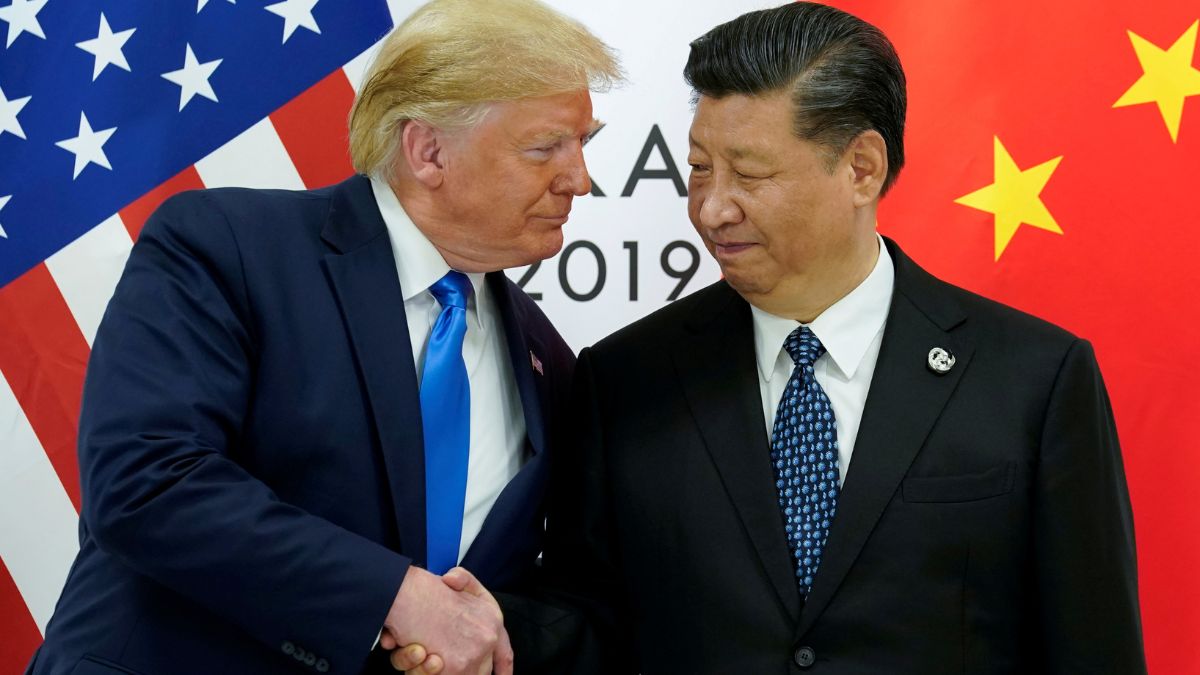Xiaomi
**announced** its latest smartphone, the
**Xiaomi Mi A1** , at a launch event held in New Delhi on 5 September. The company has priced the device at a price of Rs 14,999 and the device will be available through both the online as well as offline retail channels. One thing to note here is that the Mi A1 will be available as a Flipkart-exclusive, along with availability on Mi store. [caption id=“attachment_4010807” align=“alignleft” width=“380”] Image Credit: Xiaomi[/caption] The company has termed the device as its first ‘Flagship Dual Camera’ smartphone to be launched in the Indian market. The reason for this terminology is because this is the first Xiaomi smartphone to launch in India that packs a Dual camera setup. The company compared the dual camera performance of the smartphone with the likes of the
**Apple iPhone 7 Plus** and
**OnePlus 5** . However, the dual camera setup is not the only highlight of Mi A1. This is the first
Android One smartphone from Xiaomi. This means that the smartphone offers a stock Android experience out of the box instead of the heavily skinned MIUI version of Android as on other Xiaomi devices. This is a first for the company because this will give users a reason to choose a Xiaomi device if they were holding against buying a Xiaomi device because of the MIUI operating system. [caption id=“attachment_4010749” align=“alignnone” width=“825”]
Image Credit: Xiaomi[/caption] The Xiaomi Mi A1 comes with a metal unibody design along with a 5.5-inch Full HD 2.5D display. The screen has an
LTPS IPS LCD display panel that is protected by Corning Gorilla Glass 3. The Mi A1’s rounded edges give the phone a premium feel and it has a fingerprint sensor located at the back. In terms of memory, the A1 offers 4 GB of RAM and 64 GB of internal storage which is expandable via a microSD card. The smartphone is powered by an octa-core Qualcomm Snapdragon 625 processor clocked at 2.0 GHz along with Adreno 506 GPU to handle graphics-intensive tasks. [caption id=“attachment_4011637” align=“alignnone” width=“825”]
Image Credit: Xiaomi[/caption] In the camera department, the phone sports a dual camera with a 12 MP wide-angle sensor and a 12 MP telephoto lens. This enables 2x optical zoom along with the ability to take portrait images with shallow depth of field by creating a bokeh effect which blurs a subject’s background. The camera also offers up to 10x digital zoom and has dual-flash as well. On the front of the phone is a 5 MP selfie camera. However, as mentioned in a previous comparison, the Xiaomi Mi A1 isn’t the only game in town. Off late, several companies, including Motorola, Lenovo, Huawei, and Coolpad have launched the
**Moto G5S Plus** ,
**Lenovo K8 Note** ,
**Honor 6X** , and
**Coolpad Cool Play 6** in the market at around the same price. [caption id=“attachment_3988995” align=“alignnone” width=“825”]
Lenovo Moto G5S Plus[/caption] A dual-camera setup is no guarantee of image quality, however. The implementation of a dual camera setup may vary from device to device and from manufacturer to manufacturer. Usually, the configuration of the camera depends on the pricing of the device and what features the smartphone manufacturer is promising. Smartphone makers are capitalizing on buzz words like ‘dual camera’ as more and more people may think that dual-camera setup is much better than a single-camera setup. For our comparison, we chose the Xiaomi Mi A1,
**Moto G5S Plus** , Lenovo K8 Note, Huawei Honor 6X, and
**Coolpad Cool Play 6** . All these smartphones are around the same price point and target the budget smartphone buyer. Bear in mind that we’re still not done testing some of these smartphones, so we’re currently comparing them only on paper. A real world test should follow soon.
| Smartphone | Moto G5S Plus | Xiaomi Mi A1 | Lenovo K8 Note | Huawei Honor 6X | Coolpad Cool Play 6 |
|---|---|---|---|---|---|
| Display Size (inch) | 5.5 | 5.5 | 5.5 | 5.5 | 5.5 |
| Resolution (pixels) | 1,080 x 1,920 | 1,080 x 1,920 | 1,080 x 1,920 | 1,080 x 1,920 | 1,080 x 1,920 |
| Pixel Density (PPI) | 401 | 403 | 401 | 403 | 401 |
| Display Type | IPS LCD | LTPS IPS LCD | IPS LCD | LTPS IPS LCD | IPS LCD |
| Dimensions (mm) | 153.5x76.2x8 | 155.4x75.8x7.3 | 154.5x75.9x8.5 | 150.9x76.2x8.2 | 152x75.2x8.5 |
| Weight (g) | 168 | 165 | 180 | 162 | 175 |
| Dual SIM | Yes | Yes | Yes | No | Yes |
| SIM Type | Nano-SIM | Nano-SIM | Nano-SIM | Nano-SIM | Nano-SIM |
| Connectivity Types | GSM / HSPA / LTE | GSM / CDMA / LTE | GSM / HSPA / LTE | GSM / HSPA / LTE | GSM / CDMA / HSPA / LTE |
| Processor | Qualcomm Snapdragon 625 | Qualcomm Snapdragon 625 | Mediatek Helio X23 | HiSilicon Kirin 655 | Qualcomm Snapdragon 653 |
| CPU Cores | Octa-core | Octa-core | Deca-core | Octa-core | Octa-core |
| CPU Clock Speed | 8x Cortex A53 @ 2.0 GHz | 8x Cortex-A53 @ 2.0 GHz | 3x Cortex A72 @ 2.3 GHz, 3x Cortex A53 @ 1.85 GHz and 3x Cortex A53 @ 1.4 GHz, M4 motion processor | 4 Cortex-A53 @ 2.1 GHz & 4 Cortex-A53 @ 1.7 GHz | 4x Cortex A72 @ 2.0 GHz and 4x Cortex A53 @ 1.5 GHz |
| GPU | Adreno 506 | Adreno 506 | Adreno 505 | Mali-T830 MP2 | Adreno 510 |
| RAM | 4 GB | 4 GB | 3 GB, 4 GB | 4 GB, 6 GB | 6 GB |
| Onboard Memory | 64 GB | 64 GB | 32 / 64 GB | 32 / 64 GB | 64 GB |
| Expandable Memory | Yes, up to 128 GB | Yes, up to 128 GB | Yes, up to 256 GB | Yes, up to 256 GB | No |
| Sensors | Fingerprint, Accelerometer, Gyroscope, Proximity, Compass | Fingerprint, Accelerometer, Gyroscope, Proximity, Compass, Infrared | Fingerprint, Accelerometer, Gyroscope, Proximity, Compass | Fingerprint, Accelerometer, Proximity, Compass | Fingerprint, Accelerometer, Gyroscope, Proximity, Compass |
| Primary Camera | 13 MP f/2.0, 13 MP f/2.0 | 12 MP f/2.2, 12 MP f/2.6 | 13MP f/1.7, 5 MP f/1.7 | 12 MP, 12 MP | 13MP f/2.0, 13MP f/2.0 |
| Optical Image Stabilization | No | No | No | No | No |
| Autofocus System | Phase detection | Phase detection | Phase detection | Phase detection | Phase detection |
| Secondary Camera | 8 MP, f/2.0 | 5 MP, f/2.0 | 13 MP, f/2.0 | 8MP | 8 MP, f/2.2 |
| Video Capture | 4K | 4K | 1080p | 1080p | 4K |
| Flash | Dual-LED | Dual-LED | Dual-LED | LED | Dual-LED |
| OS Version | Android 7.1 Nougat | Android One 7.1.2 | Android Nougat 7.1.1 | Android 7.0 Nougat | Android Nougat 7.1.1 |
| AI (Smart Assistant) | Google Assistant | Google Assistant | Google Assistant | Google Assistant | Google Assistant |
| Wi-Fi | Wi-Fi 802.11 a/b/g/n, dual-band, Wi-Fi Direct, Hotspot | Wi-Fi 802.11 a/b/g/n/ac, dual-band, Wi-Fi Direct, DLNA, Hotspot | Wi-Fi 802.11 b/g/n/ac, Wi-Fi Direct, Hotspot | Wi-Fi 802.11 b/g/n, Wi-Fi Direct, Hotspot | Wi-Fi 802.11 a/b/g/n, dual-band, Wi-Fi Direct, Hotspot |
| Bluetooth | v4.2, A2DP, LE, EDR | v4.2, A2DP, LE | v4.2, A2DP, LE | v4.1, A2DP, LE, EDR | v4.1, A2DP, LE |
| NFC | Yes | No | No | No | No |
| Fingerprint Scanner | Yes, Home button | Yes, Rear button | Yes, Rear button | Yes, Rear button | Yes, Rear button |
| 3.5 mm jack | Yes | Yes | Yes | Yes | Yes |
| FM Radio | Yes | Yes | Yes | Yes | No |
| USB Type | microUSB | Type-C Reversible connector | microUSB | microUSB | Type-C Reversible connector |
| USB Standard | USB v2.0 | USB v2.0 | USB v2.0 | USB 2.0 | USB v2.0 |
| Battery (mAh) | 3,000 | 3,080 | 4,000 | 3,340 | 4,060 |
| Fast charging | Yes, Fast Charge | Yes | Yes, Turbo charging | No | No |
| Colors | Lunar Gray, Fine Gold | Black, Gold, Rose Gold | Fine Gold, Venom Black | Gray, Gold, Silver | Gold, Black |
| Prices in India | 15,999 | Rs 14,999 | 13,999 | Starting 12,999 | 14,999 |
Comparing the specifications of the smartphones in this comparison, the hardware in almost all the devices is very similar to each other. No device stands apart from the other in terms of processor and the dual-camera setup. However, comparing just the specifications of the smartphones does lead me to believe that
**Coolpad Cool Play 6** edges past the others. Mind you, I am purely speaking from the comparison chart above. The real world performance may be very different for the phone and we still have to test that. [caption id=“attachment_3955677” align=“alignnone” width=“825”] Coolpad Cool Play 6[/caption] The reason for this is because the device matches the competition in the baseline specifications but offers a more powerful Snapdragon 653 and 6 GB RAM for a price of Rs 14,999, in comparison to the Snapdragon 625 in Mi A1, Moto G5S Plus, Helio X23 in K8 Note, and the Kirin 655 in the Honor 6X. The competition offers 4 GB RAM when compared to Cool Play 6. However, there is no option to expand the storage on the Coolpad Cool Play 6. The Honor 6X is the only device that offers a variant with 6 GB RAM and it is priced at Rs 15,999. The Cool Play 6 also offers the largest battery life and USB Type-C. Inspecting the specifications more closely, the Mi A1 is, I feel, the best option here simply because it offers a stock Android experience via the
Android One program. I also feel that in this price bracket, the dual-camera offering on the A1 is a more useful choice. [caption id=“attachment_4011665” align=“alignnone” width=“825”]
Image Credit: Android[/caption] A majority of the devices in this range sport a camera setup where one camera sensor captures images in RGB while the second camera sensor captures images in monochrome mode. However, the
**Mi A1** packs a configuration similar to the
**Apple iPhone 7 Plus** and the
**OnePlus 5** where one unit works with a telephoto lens while the other works as a normal camera. The software allows the smartphone to capture images with shallow depth of field after fusing images from both the camera sensors on the back to mimic the portrait images taken with a DSLR. Considering that the Mi A1 is an Android One device, we can expect monthly security updates directly from Google. John Gold, Global Director of Android Partner Program at Google confirmed that the Mi A1 will receive Android O within 2017 and that it will be one of the first devices to get Android P. The interesting thing to note here is that the company has not even announced Android P / Android 9.0 to the world yet. These statements from Google make a strong case for Xiaomi Mi A1 as a strong contender, especially on the software side of things, at this price point.


)
)
)
)
)
)
)
)
)



